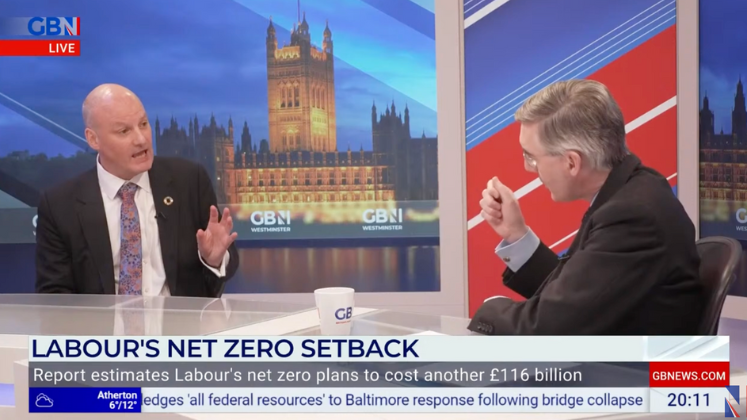In Science v. Story: Narrative Strategies for Science Communicators, Emma Frances Bloomfield parses the complexities of conveying scientific knowledge amid rampant misinformation and eroding public trust. Acknowledging the dual power of narrative to inform and divide, Bloomfield’s engaging text shares tools for crafting effective stories and urges inclusive discourse in the face of polarisation, writes Chris Featherman.
This blogpost originally appeared on LSE Review of Books. If you would like to contribute to the series, please contact the managing editor at lsereviewofbooks@lse.ac.uk.
 As the climate crisis and the existential threats it poses have laid bare, the need to effectively convey scientific knowledge to the public has arguably never been greater. Yet, this need arises amid fissuring public trust in science, with rifts widening along political fault lines and mis/disinformation metastasising through social media, whose structures reward the habitual sharing of misinformation and fuel the sugar highs of trolls and conspiracy theorists sowing discord around scientific and public health debates. The question for communicators, then, is how to make essential scientific information accessible and relevant for public audiences, while also contending with – but without stoking – disinformation.
As the climate crisis and the existential threats it poses have laid bare, the need to effectively convey scientific knowledge to the public has arguably never been greater. Yet, this need arises amid fissuring public trust in science, with rifts widening along political fault lines and mis/disinformation metastasising through social media, whose structures reward the habitual sharing of misinformation and fuel the sugar highs of trolls and conspiracy theorists sowing discord around scientific and public health debates. The question for communicators, then, is how to make essential scientific information accessible and relevant for public audiences, while also contending with – but without stoking – disinformation.
The question for communicators […] is how to make essential scientific information accessible and relevant for public audiences, while also contending with – but without stoking – disinformation.
It is precisely this dilemma that communications scholar Emma Frances Bloomfield broaches in Science v. Story: Narrative Strategies for Scientific Communicators. For Bloomfield, stories have the power to both explain and persuade, making complex technical information comprehensible to lay audiences by grounding it in their lived realities. Science communicators, she reasons, are therefore wise to leverage the power of story – when rooted in sound science – to engage and instruct the public on scientific, environmental and health-related topics.
Latent in a story’s power to convey and connect is its ability to divide.
Yet latent in a story’s power to convey and connect is its ability to divide. If stories can galvanise communities around common causes and spotlight values shared amongst factions, they can also reinforce and deepen disagreements. Bloomfield demonstrates this deftly by analysing the role of narrative in four scientific controversies: climate change, evolution, vaccination and COVID-19. She shows how stories can contribute to boomerang effects, in which an audience, rather than being persuaded by knowledge conveyed through narrative, hardens its original position. And in debates over whether scientific experts should be trusted, deploying narrative, which as Bloomfield concedes is inherently laden with ideology, can complicate demarcation problems, or the question of what counts as scientific knowledge.
But for Bloomfield, the rewards of storytelling in science communication outweigh the risks – as long as the story is told well. Which explains her book’s ultimate aim: to provide science communicators with tools for creating and evaluating stories. The first, “narrative webs”, is a visual mapping strategy for plotting six key narrative features – character, action, sequence, scope, storyteller, and content – at three levels of specificity: micro, meso and macro. Connect each plot with a line, and you get a kind of radar chart that Bloomfield calls a “narrative constellation”, which serves as a heuristic for ensuring a story’s probability – how likely the narrative events are – and its fidelity, or how compatible it is with the audience’s perception of reality.
Shrink a story’s temporal scope to human scale, ground abstractions in the target audience’s lived reality, and the story will not only resonate, she argues, but its scientific content will be easier to grasp
Narrative probability and fidelity – or, more generally, how well a story succeeds – largely depends, Bloomfield explains, on a story’s specificity and proximity. Shrink a story’s temporal scope to human scale, ground abstractions in the target audience’s lived reality, and the story will not only resonate, she argues, but its scientific content will be easier to grasp. But like too much of a good thing, these elements, she says, must be balanced. Just as a story that solely engages at an abstract level can fail to account for lived experiences, stories grounded only at the micro-level risk idealising certain perspectives or overly narrowing a scientific debate.
Bloomfield offers these strategies not simply as tools for science communicators to “better engage the public in the wonder and contributions of science” (195) but also as tactics in a discursive struggle against reactionary voices, arguing, “we cannot let disingenuous rival stories stand alone, nor should we use scientific stories to silence others” (197). The better science communicators are equipped, she reasons, the greater their chances at rebutting or debunking disinformation.
Yet for all the precision and insight of her offerings, she perhaps has not fully calculated the means and consequences of their deployment. What happens, for instance, when more stories are interjected into a media-saturated public sphere: do they shift the tide or dilute the debate? And what chance does even a well-crafted narrative have against the fire hoses and Gish gallops of disinformation designed to drown out rational discussion? Put differently, if through her strategy Bloomfield doubles down on human agency and critical capacity, it is not clear whether she sees engaging the public on scientific controversies as deliberative or agonistic. Or does this question even matter in a public sphere poised to be, as some fear, irrevocably warped by AI-generated mis/disinformation?
Does engaging reactionary voices on scientific topics risk elevating them? It does. But for Bloomfield, the need to expose the fallacies of disinformation is greater.
If these questions imply that Bloomfield over-indexes on the power of narrative, perhaps the more crucial question is the one she herself asks elsewhere in her research on the rhetoric of climate change denial: does engaging reactionary voices on scientific topics risk elevating them? It does. But for Bloomfield, the need to expose the fallacies of disinformation is greater. And throughout her book she adeptly acknowledges key caveats to using narrative in science communication, from the challenges of balancing scientific rigor with engaging storytelling to the personal risks science communicators can face when entering the “rival story” fray.
Wisely, Bloomfield recognises that science communicators cannot – and should not – go it alone, advocating for structural changes by which institutions would reward (and thus also partly shelter) scientists and academics who engage the public as part of their scholarly activity. In weighing these risks, she also shrewdly identifies a parallel opportunity: constructing narratives that challenge “Eurocentric, dominant stories … with the goal of correcting, building, and reimagining scientific inquiry to be more inclusive and representative” (35). It is a strategy, she argues, that could both centre Indigenous knowledge transmitted through narrative and amplify the voices of groups historically marginalised in scientific communities.
These claims, like Bloomfield’s entire argument, unmask the false debate in her book’s title. If science is indeed ultimately rhetorical, using narrative strategies, Bloomfield teaches us, need not be antithetical to scientific values. That those same strategies can be exploited for disingenuous or nefarious means should not simply remind us of the ongoing political struggles reflected and played out in our communication. It should also attest to the power of stories – to build knowledge, create agency, and, as Bloomfield’s vital work illuminates, bring research to bear on the challenges we collectively face and how we live together.
The content generated on this blog is for information purposes only. This Article gives the views and opinions of the authors and does not reflect the views and opinions of the Impact of Social Science blog (the blog), nor of the London School of Economics and Political Science. Please review our comments policy if you have any concerns on posting a comment below.
Image credits, clockwise from top left: rogistok, Jemastock, and studiostoks (x2) on Shutterstock.







